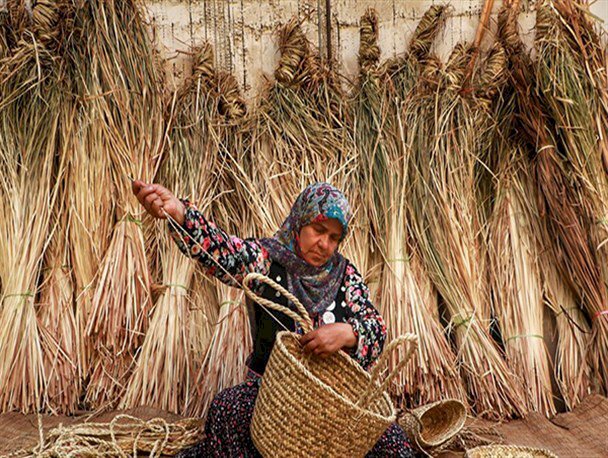Northern village shields inherited weaving skill

TEHRAN – A northern Iranian village long been a local center of mat weaving, holds weekly workshops to safeguard the know-how passed down from generation to generation.
“Every week, free-of-charge workshops on Hasir Bafi are held in Darzi Kola village, which has long been a center for the ancient craft,” a local official said on Monday.
The village, which is located in Babol county of Mazandaran province, seeks to register the time-honored skill on the national list for the intangible cultural heritage, the official noted.
Hasir Bafi, or mat weaving, is one of the oldest fields of handicrafts in the country. Archeologists have discovered traces of mat weavings on plaster pieces that belong to six thousand years ago. The oldest piece of Hasir in Iran belongs to the Shahdad region of Kerman province.
Depending on the geographical environment, crafters of each reagon use specific raw materials such as leaflets of Date trees, leaflets of Wild Date trees or Porak, female Wild Date or Daz, stems of reeds from tropical lagoons of Khuzestan, cold regions of Lake Zarivar, Anzali lagoon, lands surrounding Lake Hamun, wheat stems from provinces of Zanjan, Azarbaijan, etc.
The tools of Hasir Bafi are very simple and limited, including a sickle, file, scissors, needle and stitching awl. This art-craft is common in the provinces of Sistan-Baluchestan, Khuzestan, Kurdistan, Hormozgan, Bushehr, Kerman, Yazd, Fars, Mazandaran, Gilan, and Tehran.
To weave a mat, first stems that match each other in size and diameter are picked and soaked in water. Then three to five of them are packed together by another stem. These bundles are woven together to make objects such as baskets, bags, floor covers, wall hang, etc.
According to the Ministry of Cultural Heritage, Tourism and Handicrafts, Iran has the most cities and towns registered with the World Crafts Council (WCC), followed by China with seven, Chile with four, and India with three designated ones. The WCC-Asia-Pacific Region designated Shiraz, Malayer, Zanjan, and the village of Qasemabad in January 2020, bringing the total number of craft cities and towns in Iran from 10 to 14.
Iraq, Afghanistan, Germany, the United States, and the coastal states of the Persian Gulf are among the countries that traditionally import ceramics, porcelain, hand-woven clothing, personal jewelry, and semi-precious stones from Iran.
AFM
